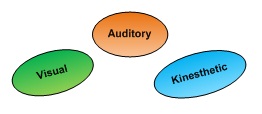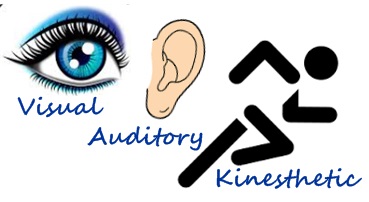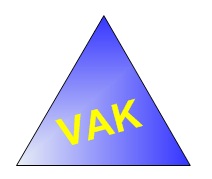

The Visual-Auditory-Kinesthetic (VAK) learning styles model provides a simple way to explain and understand learning styles. The VAK learning Style uses the three main sensory receivers (Vision, Auditory, and Kinesthetic) to determine a person’s dominate or preferred learning style.
No-one has exclusively one single style or preference. Learners use all three methods to receive information. However, one or more of these receiving styles is normally dominant. This preferred style defines the best way for a person to learn new information by determining what is to be learned.
This style may not always to be the same for some tasks. According to the VAK model, most people possess a dominant or preferred learning style. However, some people have a mixed and evenly balanced blend of the three styles. Additionally, a learner may prefer one style of learning for one task, and a combination of others for another task.
| LEARNING STYLE | DESCRIPTION |
| Visual | seeing and reading |
| Auditory | listening and speaking |
| Kinesthetic | touching and doing |

Visual learning style involves the use of seen or observed things, including pictures, diagrams, demonstrations, displays, handouts, films, flip-chart, etc.
Auditory learning style involves the transfer of information through listening: to the spoken word, of self or others, of sounds and noises.
Kinesthetic learning involves physical experience – touching, feeling, holding, doing, practical hands-on experiences.
